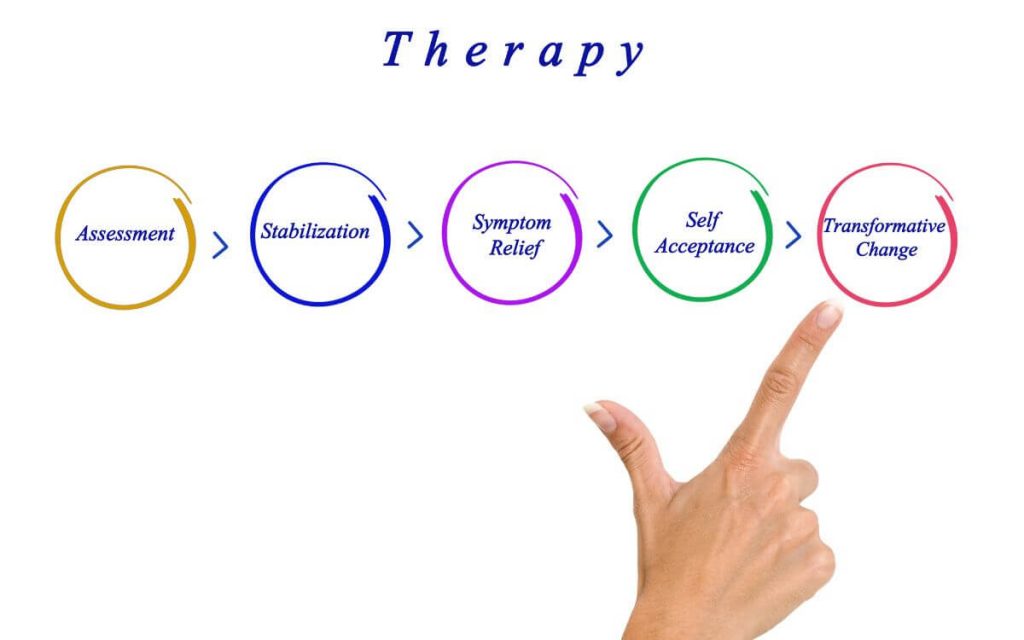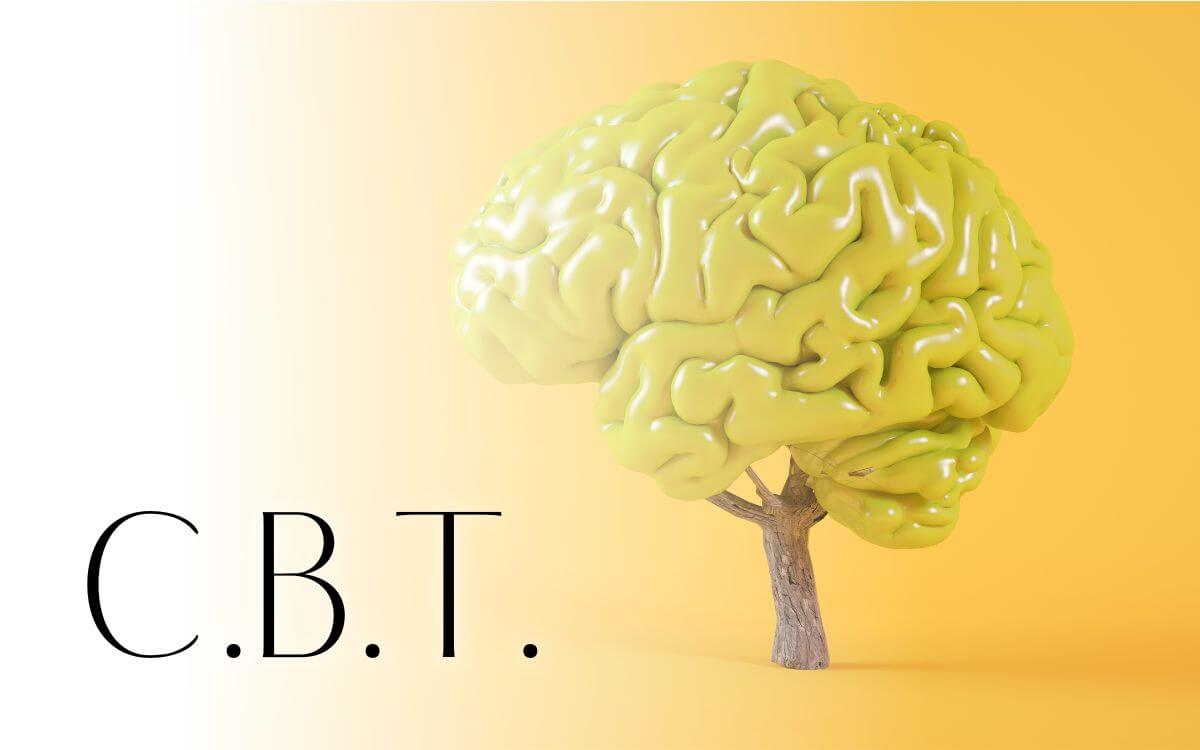Does therapy work for women with long-term illnesses?
How can I determine if therapy work for women with long-term illnesses?
Because my wife had 3 separate occupational therapy sessions, every single one of them was very beneficial.
She suffers from endometriosis and fibromyalgia. Both caused her general anxiety, panic attacks, Obsessive-Compulsive Disorder, and depression along with suicidal thoughts, and attempts.
What works for my wife does not necessarily reflect other women’s circumstances, but since my blog focuses on endometriosis and fibromyalgia, I’m going to focus on both of these conditions.
There answer to this question depends on many factors, including the severity of the illness, the type of therapy, and the individual woman’s response to therapy. However, in the next paragraph, I answer in a few sentences “does therapy work for women with long-term illnesses?”
Does therapy work for women with long-term illnesses?
The cognitive-behavioral therapy (CBT) works for women with long-term illnesses by breaking the cycle of negative thinking and behaviors. Breaking the cycle helps the symptoms of the illnesses. CBT has been found to be particularly helpful for treating anxiety, depression, and Obsessive-Compulsive Disorder (OCD).
Talking overall about chronic conditions, research suggests that therapy can help people with chronic illnesses manage their symptoms and improve their quality of life. Studies of people with chronic conditions who received therapy reported improvements in their physical and mental health, including less pain, fatigue, anxiety, and depression.
There is some evidence that therapy can be helpful for women with long-term illnesses such as endometriosis and fibromyalgia.
Women with endometriosis who received cognitive-behavioral therapy (CBT) reported reduced pain and improved quality of life compared to those who did not receive CBT. Similarly, women with fibromyalgia who received CBT had less pain, better sleep, and improved mental health compared to those who did not receive CBT.
Thus, while there is no guarantee that therapy will work for every woman with a long-term illness, it may be worth considering if you are struggling to manage your symptoms. If you do decide to try therapy, be sure to choose a therapist who is experienced in treating women with chronic illnesses.
If you have a partner, he (or she) would be a great source of support while you wait for your therapy. I wrote a book: “Supporting a Chronically Ill Partner” which can give your partner insight on how to best support you. This chapter alone gives advice about acknowledging the struggle of having a chronic condition and includes:
- A word to your partner.
- A word to you.
- Stepping on eggshells.
- Understanding her needs.
- How to acknowledge having a chronically ill partner?
- Acknowledging can be hard.
- 15 tips on how to do it!
Get the 1st Chapter FREE!
Chronic Illness for Partners

Which therapy works for women with long-term illnesses?
There are many different types of therapy, and it is impossible to say which one will work best for women with long-term illnesses because every woman is different. That said, some types of therapy that have been found to be helpful for women with chronic illnesses, include:
- Cognitive-behavioral therapy (CBT)
- Acceptance and commitment therapy (ACT)
- Dialectical behavior therapy (DBT)
- Eye movement desensitization and reprocessing therapy (EMDR)
- Hypnosis
- Interpersonal therapy (IPT)
- Mindfulness-based stress reduction (MBSR)
- Music therapy
- Occupational therapy (OT)
- Physical therapy (PT)
- Psychodynamic therapy
- Group therapy
Cognitive-behavioral therapy helps people change their negative thinking and behaviors. CBT has been found to be particularly helpful for treating general anxiety, panic disorder, depression, and Obsessive-Compulsive Disorder.
Acceptance and commitment therapy (ACT) is a type of therapy that helps people accept the things they cannot change and commit to taking action on the things they can change. And this is very helpful because chronically ill people have difficulties letting go and accepting their new way of life.
Dialectical behavior therapy (DBT) is a type of therapy that helps people manage their emotions and improve their relationships. And many relationships fail, and as many as 75% of marriages end in divorce. Amongst many long-term illnesses, fibromyalgia and endometriosis divorce rate is very high!
Eye movement desensitization and reprocessing therapy (EMDR) is a type of therapy that helps people process and heal from trauma. Gabor Maté, MD, who is an integrative medical doctor, specializing in trauma says “All of us have experienced some degree of trauma in our lives…” and “…the effects of trauma can stay with us for a long time, even if we’re not aware of it.”
Hypnosis is a type of therapy that uses relaxation and suggestions to help people change their thoughts and behaviors. Hypnosis is helpful when people want to make changes but feel stuck.
Interpersonal therapy (IPT) is a type of therapy that helps people improve their relationships. IPT has been found to be particularly helpful for treating depression. Depression is a very common outcome of chronic conditions, and up to 50% of people with chronic illnesses will experience depression at some point in their lives.
Mindfulness-based stress reduction (MBSR) is a type of therapy that uses mindfulness meditation to help people reduce their stress. On rare occasions, my wife practice mindfulness too, however, she mostly sees her therapist for CBT. MBSR has been found to be helpful for treating a variety of conditions, including anxiety, depression, chronic pain, and cardiovascular disease.
Music therapy is a type of therapy that uses music to improve physical, emotional, and mental health. Music therapy has been found to be particularly helpful for treating anxiety and depression. Being a dancer throughout most of her life, my wife benefits from listening to music whenever she can.
Occupational therapy (OT) is a type of therapy that helps people with chronic illnesses learn new skills and find ways to participate in activities they enjoy. OT can also help people manage their symptoms and improve their quality of life.
Physical therapy (PT) is a type of therapy that helps people with chronic pain and other physical impairments regain strength and mobility. My wife used both – physical and occupational therapy.
Psychodynamic therapy is a type of therapy that focuses on helping people understand and change their unconscious thoughts and behaviors. It is not a commonly known form of therapy, however, it can be very helpful for people with chronic illnesses.
Group therapy is a type of therapy that involves meeting with a group of people who have similar experiences. Group therapy can be helpful for providing support, increasing motivation, and improving coping skills. This kind of therapy can be done in person, or online. In the informational era, we all have access to laptops and most of us have access to the internet, so meeting in person is not always necessary.
Which therapy works best?
Research suggests that cognitive-behavioral therapy (CBT) may be especially helpful for women with chronic pain conditions such as endometriosis and fibromyalgia. My own wife benefits from CBT every time she receives it, therefore I would suggest it to anyone seeking relief from long-term illnesses.
I also believe that group therapy can be very beneficial for women with chronic illnesses. Group therapy provides support, increases motivation, and improves coping skills. In addition, group therapy can be a great way to meet other women who are dealing with similar chronic illnesses.
Physical and acceptance therapies, along with practicing mindful meditation are all excellent ways to help women cope with chronic illnesses. I suggest that women try a variety of therapies and find the ones that work best for them.
While therapy may not be a cure for chronic illnesses, it can provide relief from the symptoms and improve the quality of life for women with chronic illnesses. If you are a woman with a chronic illness, I encourage you to seek out therapy and find the help you need.
Knowing that many types of therapy can work for women with long-term illnesses I want to focus now more on endometriosis and fibromyalgia…

Which therapy works for women with endometriosis?
Endometriosis is a condition in which tissue similar to the one that normally lines the inside of the uterus grows outside of the uterus. This can cause extreme pain of many types, cramping, heavy bleeding, anemia, and chronic fatigue.
Aside from the above symptoms, endometriosis can also cause infertility. Endometriosis is responsible for 35% of all cases of infertility. Endometriosis is a very complex condition and it is not yet known what causes it. There is no cure for endometriosis, but there are treatments that can help to manage the symptoms.
One study found that cognitive-behavioral therapy (CBT) was effective in reducing the pain of endometriosis. CBT is a type of therapy that helps people to understand and change their negative thoughts and behaviors.
In the study, the women who received CBT had a significant reduction in pain compared to the women who did not receive CBT. The women who received CBT also had a significant reduction in fatigue, anxiety, and depression.
CBT was more effective than the medication norethindrone in reducing the pain of endometriosis. Norethindrone is a medication that is sometimes used to treat endometriosis, but it can cause side effects such as weight gain, headaches, and mood swings. CBT can be an effective treatment for the pain of endometriosis without the side effects of medication.
If you are suffering from the pain of endometriosis, I encourage you to seek out a therapist who can help you.
Now, let’s move on to fibromyalgia…
Which therapy works for women with fibromyalgia?
Fibromyalgia is a condition that causes widespread pain, fatigue, and tenderness in the muscles and joints. Fibromyalgia is a very complex condition and the cause is unknown. There is no cure for fibromyalgia, but there are treatments that can help to manage the symptoms.
Fibromyalgia is a neurological condition that affects the nervous system. The nervous system is responsible for sending signals between the brain and the body. In fibromyalgia, these signals are amplified, which can cause pain.
As well as with endometriosis, CBT is one of the most effective therapies.
Cognitive-behavioral therapy helps fibromyalgia disorder patients in several ways. It helps patients learn how to deal with pain, fatigue, and other symptoms. CBT also helps patients to understand their condition and to develop healthy coping strategies.
A study found that CBT was more effective than the medication amitriptyline in reducing the pain of fibromyalgia. Amitriptyline is a medication that is sometimes used to treat fibromyalgia, but it can cause side effects such as drowsiness, weight gain, and dry mouth.
CBT can be an effective treatment for the pain of fibromyalgia without the side effects of medication. If you are suffering from the pain of fibromyalgia, I also encourage you to seek out a therapist who can help you.
CBT for endometriosis and fibromyalgia.
Both conditions caused my wife an impossible amount of discomfort and stress. Aside from financial strain, endometriosis cost her motherhood, impacted our intimacy and social lives, her dance career, and her sanity, and almost cost her life.
She tried to commit suicide on a few occasions, and if it wasn’t for the mental health team and CBT, my wife would struggle to be alive today.
On top of being diagnosed with the worst type – stage IV deep infiltrating endometriosis, my M was also diagnosed with fibromyalgia. This disorder made her feel as if her body was on fire, waking up in the morning feeling like she had been in a car accident, and being in so much pain that she couldn’t function on a daily basis.
CBT was the only thing that helped my wife to deal with her conditions. It helped her to understand her conditions, to develop healthy coping strategies, and to manage her pain.
If you are suffering from the pain of endometriosis or fibromyalgia, I encourage you to seek out a therapist who can help you. CBT can be an effective treatment for the pain of both conditions without the side effects of medication.
Final word.
In conclusion, CBT is an extremely effective therapy for women with long-term illnesses. If you, or your partner, suffer from endometriosis or/and fibromyalgia, begin with CBT. You will find that this type of therapy works without the side effects of medication. This therapy will help you to live a better quality of life.
I hope this article has helped you to understand the benefits of CBT for women with long-term illnesses. If you have any questions, please feel free to leave a comment below. I will be happy to help you in any way that I can.
Thank you for reading!
Get the 1st Chapter FREE!
Chronic Illness for Partners



About Me
Hi, I’m Lucjan! The reason why I decided to create this blog was my beautiful wife, who experienced a lot of pain in life, but also the lack of information about endometriosis and fibromyalgia for men…
